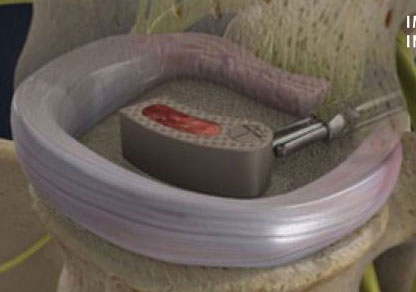Many patients who suffer from instability of the spine, compression of the spine, or even a reduction of disc height could benefit from a minimally invasive TLIF. The procedure removes a degenerated disc from the spine, which relieves the compression of the nerve roots and allows the patient to see an improvement in their pain symptoms. Because the procedure is minimally invasive, many patients can be discharged from the hospital the day following the surgery. If you are suffering from disc degeneration or spinal instability, you may qualify for a minimally invasive TLIF.
What Occurs During Surgery?
First, general anesthesia is administered to the patient. After this step has been completed, the surgeon utilizes an X-ray machine to assess where they must make their incision. Once they have determined where the vertebral level have degenerated, they then make the incision at the skin just above that targeted area. From this point, the surgeon then inserts a series of dilators which chart a path through the muscle to the spine. With this done, the surgeon then uses retractors to part the muscles and remove the dilators. The end result is a channel through which the surgeon can view the spine and perform the procedure without leaving scarring on the muscle.
The surgeon then begins by removing the back of the vertebrae to make way to the degenerated disc. From that point, the surgeon removes the disc and leaves room for the nerves in the spinal canal. They then use a bone graft of the patient’s own bones to be implanted into the empty disc space. This serves to lift the vertebrae and relieve pressure on the nerve roots.
Finally, the surgeon uses screws and rods to provide additional support which can aid in fusing the bone together. When the additional support has been securely placed, the surgeon then removes all the surgical tools and closes the incision.
Recovery & Follow-Up
There are minor restrictions that are essential for recovery. These are:
- No heavy lifting
- No repetitive motions such as bending or twist at the waist
Many patients are able to resume their regular work, provided that it is not labor intensive, within several weeks. Occasionally, the patient may be recommended additional assistance for their recovery such as physical therapy or pain medication. However, this is not necessary for the entire duration of recovery. Physical therapy will generally last somewhere up to three months and pain medication may be used for one to two weeks.
Patients will come back in for follow-up after the surgery then at regular intervals for up to one year after the surgery has been performed. They will receive X-rays regularly as well in order to assess the progress of their bone fusion.
Are You Considering Minimally Invasive TLIF?
If you are considering having the procedure done to relieve the pain in your spine, speak to Dr. Stephen Courtney at Advanced Spine Center. As an experienced orthopedic spine surgeon, he can chart a course for your recovery and help you determine if TLIF is right for you. To learn more, visit the Advanced Spine Center website.

